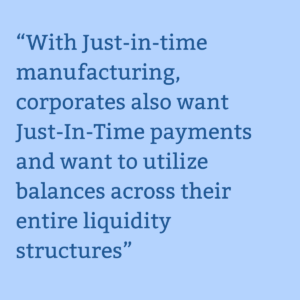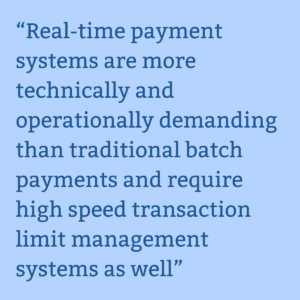- What we do
-
-
-
-
"Intellect’s continued dominance at the IBSi Sales League Table underscores its pioneering role in the fintech industry. Their commitment to innovation, exemplified by the groundbreaking eMACH.ai platform, continues to set a high benchmark in Retail Core Banking, Transaction Banking, and Lending. Intellect’s solutions are not only reshaping the present landscape but are also poised to lead the evolution of financial services globally, driving unprecedented advancements and customer-centric solutions."

Robin Amlôt
Managing Editor at IBS Intelligence
-
-
-
- Company
-
-
-
-
"Intellect’s continued dominance at the IBSi Sales League Table underscores its pioneering role in the fintech industry. Their commitment to innovation, exemplified by the groundbreaking eMACH.ai platform, continues to set a high benchmark in Retail Core Banking, Transaction Banking, and Lending. Intellect’s solutions are not only reshaping the present landscape but are also poised to lead the evolution of financial services globally, driving unprecedented advancements and customer-centric solutions."

Robin Amlôt
Managing Editor at IBS Intelligence
-
-
-
- Knowledge
-
- Our Events
- Contact Us
Africa Roundtable Event
Learn More News FlashiGTB Pulse Newsletter May 2025
Learn More News FlashHighlights of iGTB at EBAday 2025
Learn More News FlashEnhancing Corporate Payment Efficiency with SWIFT GPI Tracker powered by eMACH.ai
Learn More News FlashEmpower Digital Payments: KPI-Driven Payments with Self-Service Intelligence
Read More News FlashUnlocking Africa’s Trade Finance Potential: Driving Growth Through Digital Innovation
Read More


Payments: Just-in-time

Tapan is a banking technology and domain expert, who now leads the payments product management function for iGTB. He has over 2 decades of experience in banking technology, having worked at Oracle OFSS (i-flex), Wipro, MindTree and Deutsche Software. He has worked in roles that range from development, design, consultancy to strategy and operational roles including managing large teams, top line targets and bottom-line responsibilities. He has implemented banking technology in multiple banks and consulted with CTOs and CIOs at banks on technology driven business and operational efficiency improvement.
Let’s avoid the easy reflections from hindsight and apply foresight.Corporate Account Structures, Intra-Day Liquidity Management and Payments Transaction Limits Management
The Problem: Fast Supply Chains vs. Slow Financial Processes
The lack of real time cross border payments, lack of instant credits into corporate accounts due to mainframe / batch core DDA systems, the lack of real time intra- day sweeps and the lack of real time balance and transaction reporting forces corporate treasurers to maintain high balances (inventory) at BOD.
Thus, while the manufacturing supply chain and the logistics supply chain are real time / just-in-time, the financial supply chain is still operating on a T+n basis.


The Cost: Financial Strain and Liquidity Challenges for Corporates
For the Corporate, all this comes at a huge cost. To maintain a high BOD balance, corporate treasurers may end up with short term borrowing. To maintain multiple accounts – some in debit balances and some in credit balances – will make the corporate incur higher interest cost. There is also the cost of the intra-day OD facilities and EOD OD facilities. There is also the cost of not being able to clear those high value payments because the account has used up its balance, and for a corporate treasurer, this can get frustrating as he may actually have a large credit balance in another account with the same bank.
Highlight specific costs, such as the need for maintaining high BOD balances, increased short-term borrowing, and the risks of delayed payments. Discuss the impact on working capital management and how treasurers face liquidity issues due to T+N delays.

“I was once speaking to a Transaction Banking Head at a large bank, who said, ‘listen Tapan, I really don’t want to reject high value payments of these large corporates. They were maintaining very high overdrafts at each account level, and this came at a huge cost to our bank since we had to maintain provisions under Basel 3 for these facilities and it impacted our bottom-line’.”

The Solution: Unlocking Efficiency with Just-In-Time Payments
A world of Just-in-time payments beckons!
The solution that global transaction banks need to consider is to offer real-time balance netting across a group of accounts.
By consolidating 100’s of thousands of accounts of a corporate and its subsidiaries into a CAS (Composite and Complex Account Structure) and specifying net and gross limits at each account, account group, subsidiary and parent level, the bank will be able to save:
- the bank will be able to save on its Basel 3 LCR (Liquidity Coverage Ratio) requirements
- and the corporate will be saved of maintaining a high BOD Balance or for requesting high daylight exposure limits.
Detail how just-in-time payments can synchronize financial flows with supply chains, reducing the need for high BOD balances. Explain the benefits, such as reduced borrowing, improved liquidity, and enhanced cash flow predictability. Include a brief case or example of how just-in-time payments transform financial management for corporates.

It’s a win-win for both the client and the bank.
A sophisticated, stand-alone system…ta da!
Which aggregates and computes limits and balances instantaneously, is the need of the hour…
A transaction limits management system could help banks:
- Check balances in real time across multiple core DDA platforms, or
- Account management systems and check the associated net and gross limits and give a payment decision back to the payment engine.
If funds are insufficient, a system such as this could place the transaction in a referral queue and do an automatic re-try just before cut off or even throughout the day.
Some global transaction banks have built regional balance control systems (RBCS) such as these, while those that have not struggle with even a real time balance view and incur high payment operations cost and end up having larger teams to manage the larger volume of payments in funds-check retry queues.
As banks across the world are modernizing their payments infrastructure for ISO20022, Open Banking, PSD2, Instant Payments Support etc., the need to implement a Transaction Limits Management system become more relevant.
Today, in the case of real- time payments, some countries have removed the upper threshold for instant payments, while some have significantly raised the upper cap.

Example:
- For instance, UK faster payments has a limit of £ 250,000 with plans to increase it to £ 1,000,000
- There is no upper limit for intra-bank instant payments within Netherlands
It’s a safe bet to say that corporate treasurers will want their banks to offer them:
- Real-time Visibility
- Real-time Balances
- Real-time Intraday Liquidity Sweeps
- and Balance Netting
All so that they don’t have to maintain high BOD Balances in multiple banks / accounts. After all, inventory, whether it is in manufacturing or in finance, represents cost.
It is high time that corporate transaction banks started thinking of procuring a centralized payment transaction limits management system that can track exposure and authorize payments by checking limits and balances at various levels such as customer, customer group, legal entity account group, account etc.
This will benefit the bank to process payments with less risk and less cost and the clients benefits from payments that execute immediately!
Tapan is a banking technology and domain expert, who now leads the payments product management function for iGTB. He has over 2 decades of experience in banking technology, having worked at Oracle OFSS (i-flex), Wipro, MindTree and Deutsche Software. He has worked in roles that range from development, design, consultancy to strategy and operational roles including managing large teams, top line targets and bottom-line responsibilities. He has implemented banking technology in multiple banks and consulted with CTOs and CIOs at banks on technology driven business and operational efficiency improvement.





























